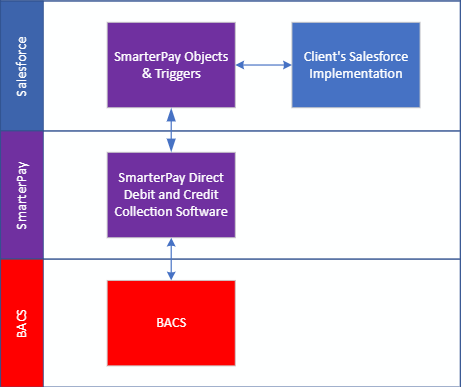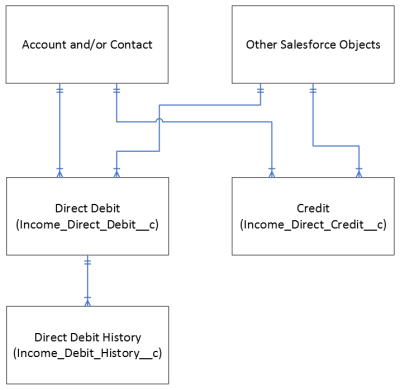Architecture

Smarterpay BACS Direct Debit and Credit consists of a set of objects within Salesforce that represent the direct debit and credit process.
SmarterPay’s processing software, which sits on our own secure servers, interacts with these objects to generate files to send to BACS or process reports received by BACS. This acts as a bridge between Salesforce and BACS, ensuring customer payments are managed correctly and updated accordingly in Salesforce. This process is completely automated and therefore clients do not have to handle file generation and submission manually, nor do they have to process BACS reports manually.
Direct Debits
Smarterpay's Direct Debit object structure consist of two objects, 'Direct Debit' and 'Direct Debit History'.
The first object, ‘Direct Debit’, is a combination of the direct debit mandate and the bank account. These are usually linked to an Account and/or Contact record. The direct debit object can also be linked to any other standard or custom object, allowing the connection to an opportunity, invoice, subscription, etc.
The second object, ‘Direct Debit History’, is a full audit trail of everything that has taken place on that direct debit. This includes any collections, failures or other types of BACS reports.
Credits
Credits are simpler in how they process and are handled with a single ‘Direct Credit’ object. This single object stores information such as recipient bank details, the status of the credit and the amount. As with Debits, this is a regular Salesforce object and can therefore be connected to any number of other objects within Salesforce, such as Contact, Opportunity or custom objects.
Object Structure
